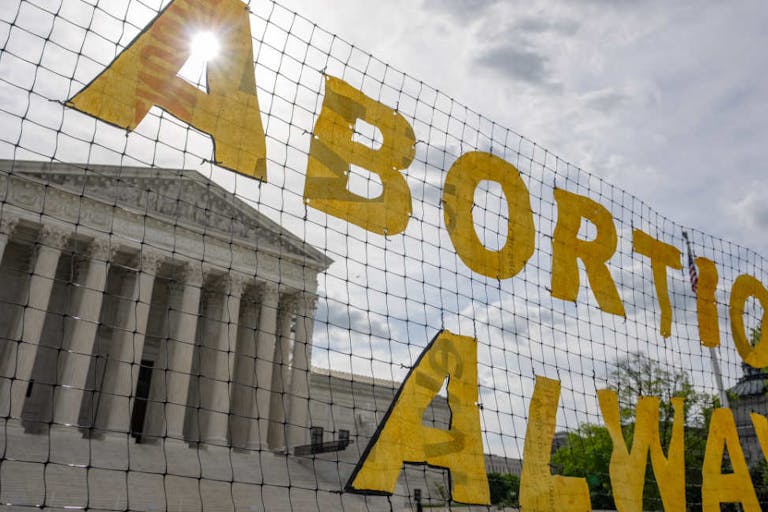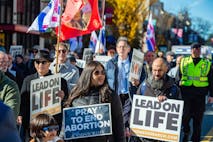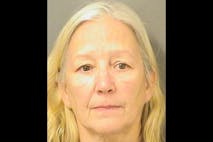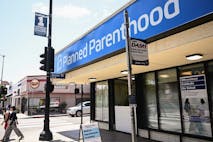
A growing number of Americans call themselves ‘pro-choice’ – but what’s really behind it?
Nancy Flanders
·
Trouble in Oklahoma as classroom abortion question angers high-school parents
How young is too young for kids to debate abortion?
Edmond, Oklahoma is grappling with the question after some students came home with a controversial discussion prompt:
Edmond Santa Fe High School officials confirmed Tuesday several biology teachers at the school gave their students a “non graded exercise” – a discussion starter – on human genetic disorders.
“You’ve found out that the child you (or your wife) carries has the gene for dwarfism. A new therapy exists that may repair this gene before the child is born. What do you do?” the first question on the exercise asks.
1. Allow the child to be born with the gene, and we will accept the child as is.
2. Attempt the new therapy to repair the gene.
3. Terminate Pregnancy.
Naturally, some parents have complained that the exercise smacks of political indoctrination, usurping their rightful place as the primary teacher of their children’s values. The school district maintains that students were not required to participate, nor would their answers be graded in any way, but has not made a final decision whether or not to stop the exercise.
In theory, bioethics controversies should be appropriate for classroom discussion. Middle school and earlier would be a different story, but high school is where teenagers are beginning their transition into adulthood and their roles as independent citizens. As such, they’ll shape their society and culture in innumerable ways, not least of which is the power to vote on their government’s future. Provided that parents and students know in advance what they’re getting into with any given class, it’s not too early to introduce them to some of society’s darker challenges — again, theoretically.
In practice, though, how many public schools can be trusted to facilitate such discussions impartially is another matter. In this case, the first red flag is the fact that they call option C “Terminate Pregnancy,” rather than, say, “abort the fetus.” I use “fetus” here purely for the sake of the neutrality a teacher should practice, but the politically correct euphemism is especially interesting contrasted against the rest of the exercise’s language acknowledging it’s talking about a child.
The second is that Santa Fe School District thinks it’s just fine to refer students to Planned Parenthood. Yes, they refer them “only” for STD testing and don’t mention abortion as an option for crisis pregnancies. But endorsing PP for one purpose is at least a tacit endorsement for the rest of their services (like all Planned Parenthoods, the location whose address they give students does abortion referrals).
And even if you ignore abortion, we’re talking about an organization whose deeply twisted sexual values include actively promoting sexual activity among elementary school students, “there’s a little bit of slut in all of us,” and (my personal favorite) that it’s okay not to warn your sex partners that you’re HIV-positive.
Any educator who is either ignorant of or comfortable with all that is manifestly unfit to help impressionable students think objectively about contentious moral issues, particularly on an issue related to Planned Parenthood’s broader ideology.
Properly run high-school discussions about issues like abortion, committed to factual accuracy and a faithful presentation of the competing viewpoints, could do wonders to clarify the critical thinking of future generations’ mushy middle. It’s a pity that too often, the people tasked with cultivating young minds are the least trustworthy to do so.
Live Action News is pro-life news and commentary from a pro-life perspective.
Contact editor@liveaction.org for questions, corrections, or if you are seeking permission to reprint any Live Action News content.
Guest Articles: To submit a guest article to Live Action News, email editor@liveaction.org with an attached Word document of 800-1000 words. Please also attach any photos relevant to your submission if applicable. If your submission is accepted for publication, you will be notified within three weeks. Guest articles are not compensated (see our Open License Agreement). Thank you for your interest in Live Action News!

Nancy Flanders
·
Activism
Cassy Cooke
·
Politics
Bridget Sielicki
·
Issues
Nancy Flanders
·
Issues
Bridget Sielicki
·
Issues
Angeline Tan
·
Politics
Calvin Freiburger
·
Guest Column
Calvin Freiburger
·
Abortion Pill Reversal
Calvin Freiburger
·
Guest Column
Calvin Freiburger
·
Abortion Pill Reversal
Calvin Freiburger
·